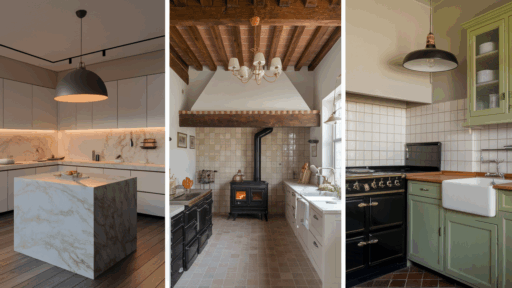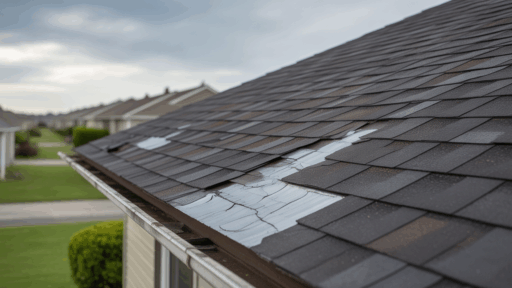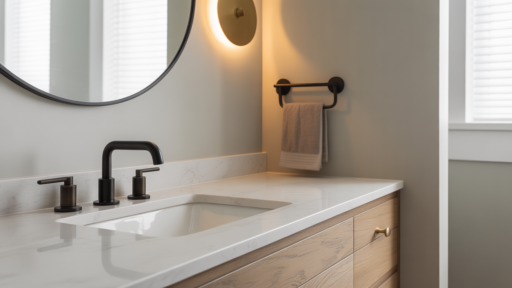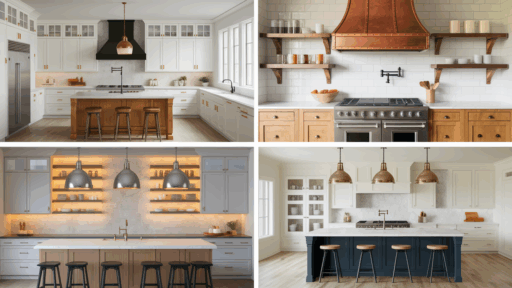When I started planning my home update, I had no idea how many different types of windows there were. From classic styles to more modern ones, each type has its own look and purpose.
I quickly learned that choosing the right window can make a big difference in how a room feels and functions. Some windows are perfect for letting in fresh air, while others are all about the view or saving energy.
I like how some styles work better in tight spaces, while others add charm or make a room feel bigger. It really depends on what you need and where the window will go.
Whether you’re building new or replacing old ones, it’s helpful to know your options. This is a simple guide to the different types of windows I looked into and why each might be the right fit for your home.
What to Consider Before Choosing a Window Type
Choosing a window isn’t only about style. It’s about finding the right fit for your home’s needs, your climate, and your lifestyle.
- Climate and Energy Efficiency: Different window styles perform better in different climates. In cold areas, casement windows with tight seals can help retain heat. In warmer regions, jalousie or awning windows offer airflow.
- Room Function and Window Placement: Bathrooms may need privacy and ventilation, while living rooms benefit from wide views and lots of light. Placement affects how usable and effective the window will be.
- Ventilation and Natural Light Needs: Some windows don’t open, which is great for views but not for airflow. Others offer wide openings to keep fresh air circulating.
- Style and Architecture of the Home: Modern, traditional, or farmhouse homes all have window types that match their design language. Picking one that fits your home’s overall style makes a big visual difference.
- Budget and Maintenance Requirements: Some windows are more expensive upfront or require more maintenance. Consider how often you’re willing to clean, repair, or repaint.
Best Types of Windows for Every Home Style
Choosing the right window style can completely change how your home looks and feels. The best types blend function, beauty, and the style of your space.
1. Single-Hung Windows
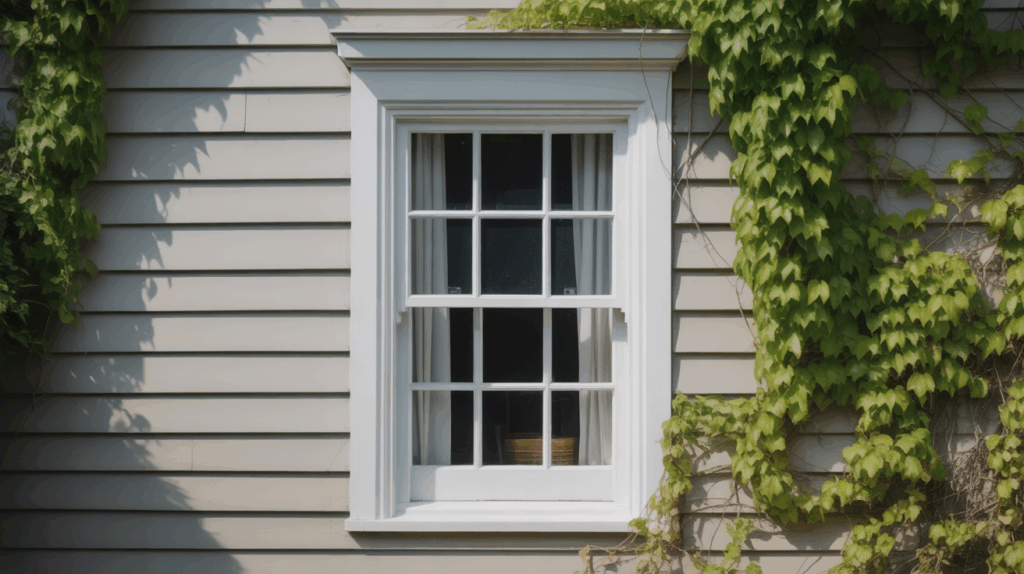
A traditional style where the bottom sash moves up while the top remains stationary. This type is common in older homes and economical new builds.
It’s easy to operate and is often chosen for its affordability. Cleaning the exterior can be challenging on upper floors.
Pros: Simple and budget-friendly
Cons: Only the bottom sash opens, limiting ventilation
2. Double-Hung Windows
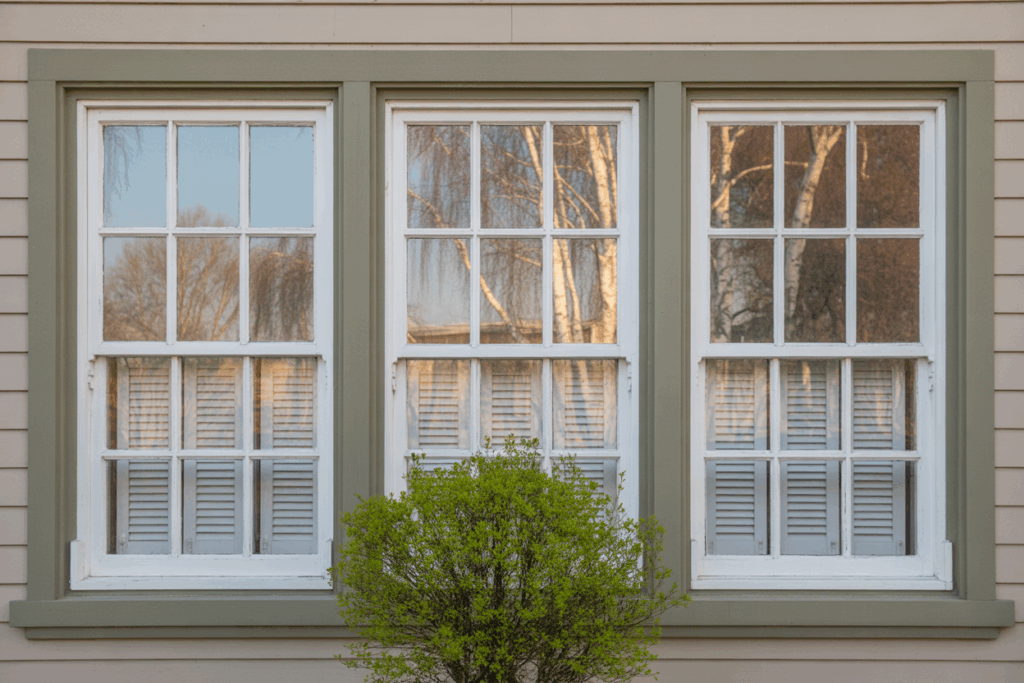
Both the upper and lower sashes slide vertically, allowing better airflow and easier cleaning from inside.
Many homeowners prefer this style for bedrooms and living rooms. Tilt-in sashes make them easy to maintain. However, they may be less airtight than crank-style windows.
Pros: Great for ventilation and easy to clean
Cons: Less energy-efficient than fixed or casement windows
3. Casement Windows
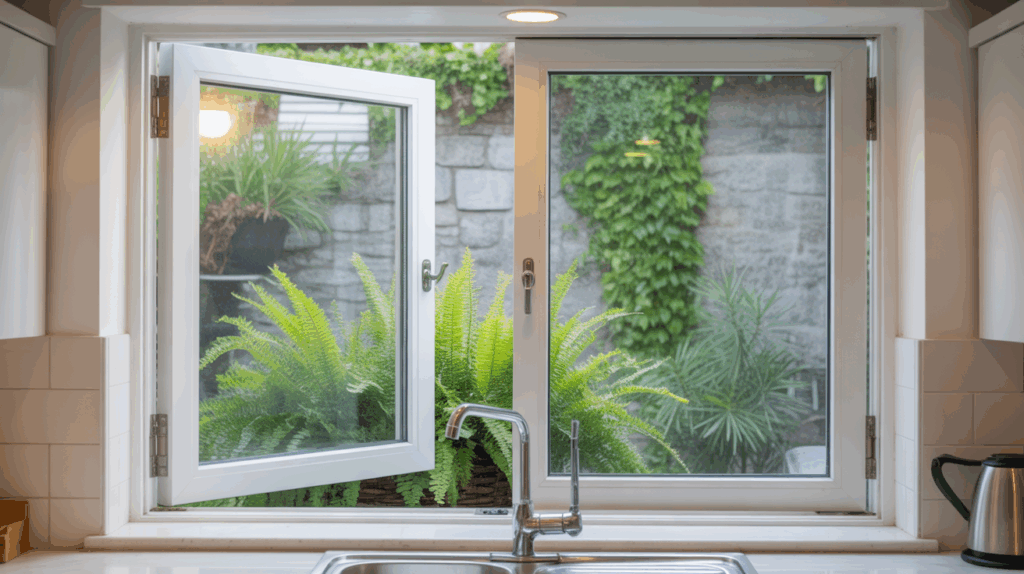
These windows are hinged on one side and open outward like a door using a crank handle. They offer excellent ventilation and seal tightly when closed.
Casements are often placed in hard-to-reach areas like above sinks. Their moving parts may require more maintenance over time.
Pros: Excellent ventilation and tight seal
Cons: Hinges may wear; not ideal near walkways
4. Awning Windows
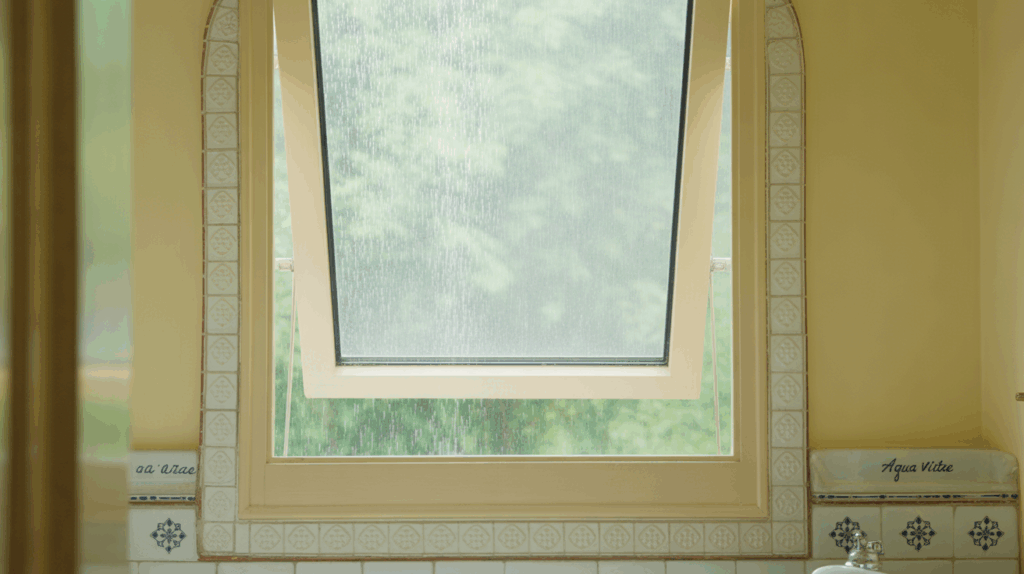
Hinged at the top and open outward from the bottom, awning windows allow airflow even during light rain.
They’re great for basements and bathrooms where privacy and ventilation are both needed. Their outward swing makes them less suitable near walkways or patios.
Pros: Good airflow and weather protection
Cons: Not ideal where space outside is limited
5. Sliding Windows

These windows move horizontally on tracks and are easy to use. They’re ideal for rooms with wide walls, offering expansive views.
Sliding windows are a good fit for contemporary homes. One drawback is that typically only one side opens.
Pros: Smooth function and space-saving design
Cons: One sash is usually fixed
6. Picture Windows

Large and fixed, picture windows are designed to frame scenic outdoor views. They do not open but let in a significant amount of light.
Ideal for living rooms or stairwells, they provide a clean, uninterrupted look. Lack of ventilation is their main tradeoff.
Pros: Excellent for natural light and views
Cons: No ventilation capability
7. Bay Windows
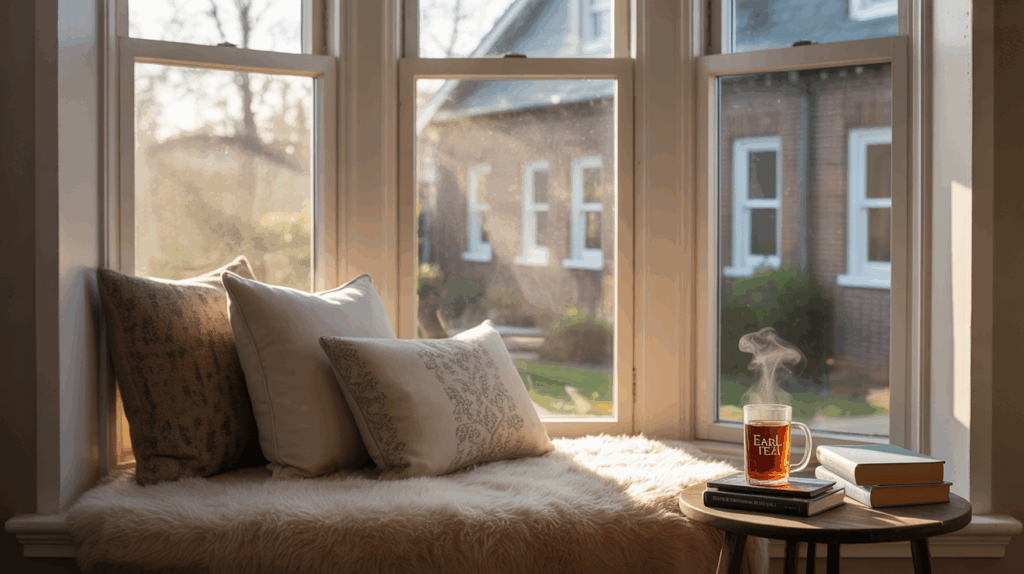
Bay windows project outward from a wall and include three sections, usually with a fixed center and angled side panes.
They create a small nook inside, perfect for seating or displays. These windows add dimension to a home’s exterior. Installation may require structural adjustments.
Pros: Adds charm and extra interior room
Cons: Requires more structural support
8. Bow Windows
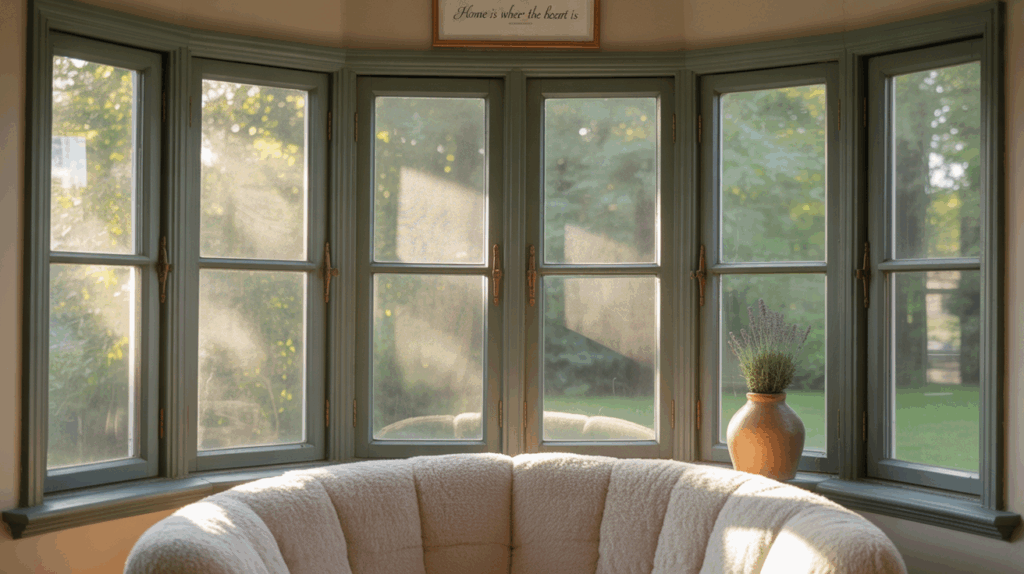
Bow windows are curved versions of bay windows with four or more panes. They create a gentle, rounded extension that floods rooms with light.
Bow windows enhance both interior and exterior aesthetics. Due to their complexity, they are more costly and harder to install.
Pros: Expands views and brings in more light
Cons: More costly and complex to install
9. Garden Windows
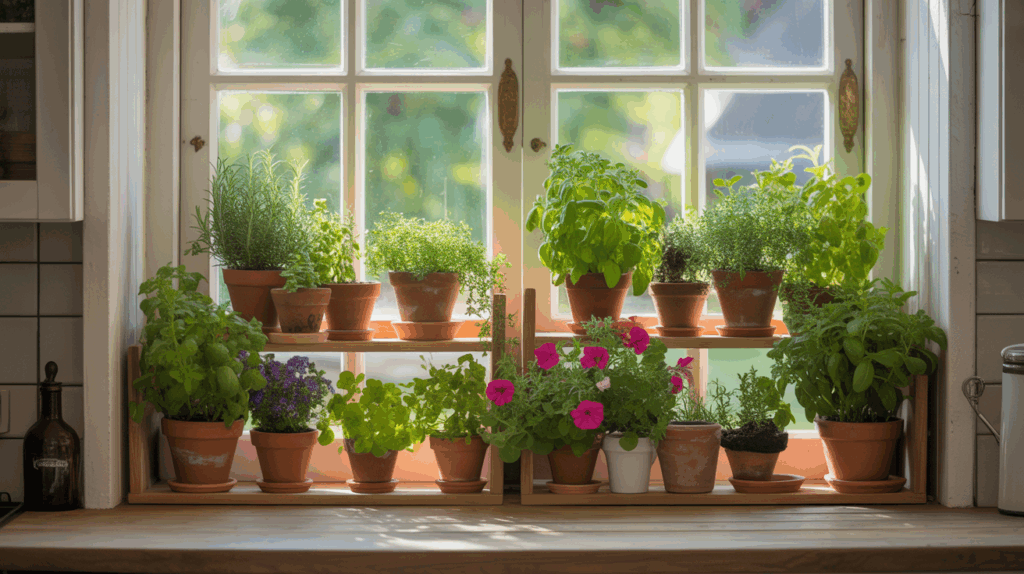
Boxy and extending from the wall, garden windows have glass on all sides and a shelf inside.
Perfect for growing herbs or houseplants. Most often used in kitchens, they act like a tiny greenhouse.
Insulation and sealing must be carefully done to prevent leaks.
Pros: Ideal for indoor gardening and sunlight
Cons: Can leak or lose heat without proper sealing
10.Skylight Windows
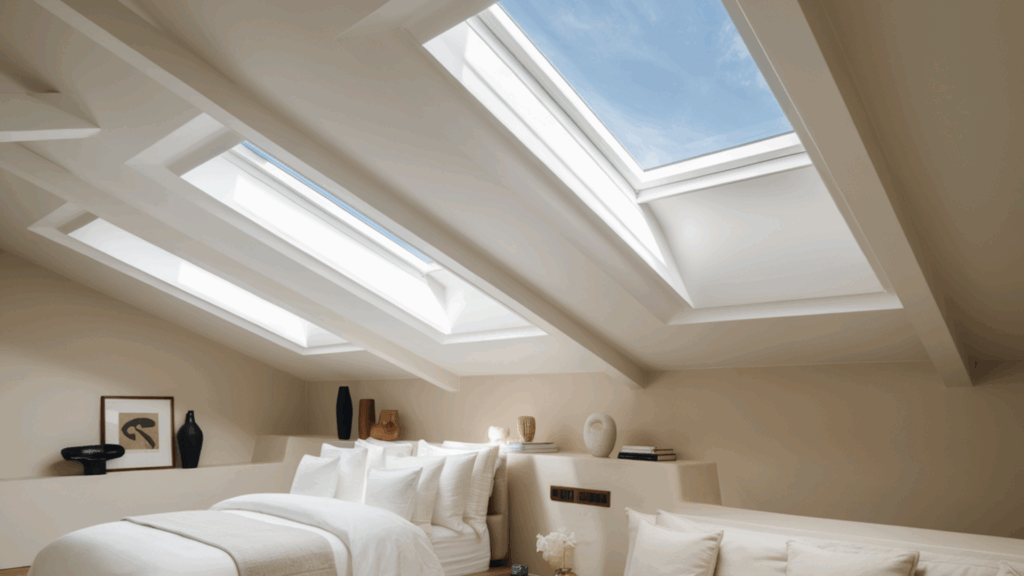
Skylights are installed in the roof to allow natural light from above. They brighten interior spaces that don’t have exterior walls.
While they look beautiful, they can be tricky to maintain. Leaks can occur if not properly installed or sealed.
Pros: Great for lighting and saving wall space
Cons: Risk of leaks and harder to clean
11. Transom Windows
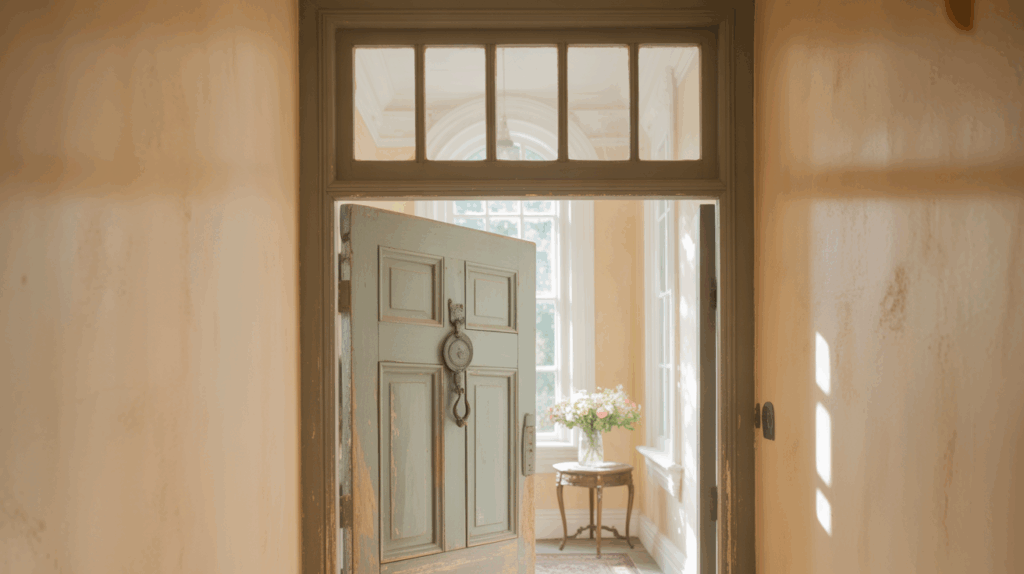
Small windows are placed above doors or other windows, often fixed in place.
Transoms let in extra light and add an architectural flourish.
They’re great in hallways or entryways. Typically decorative, they’re not used for airflow.
Pros: Decorative and brightens spaces subtly
Cons: Usually fixed and non-operable
12. Hopper Windows
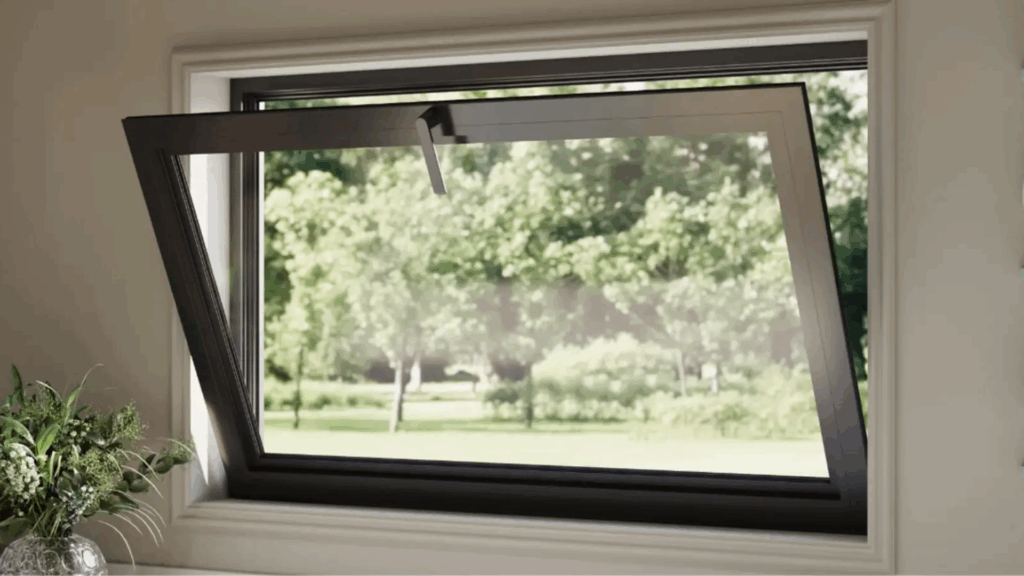
These bottom-hinged windows open inward from the top and are often seen in basements or laundry rooms.
Their compact size makes them ideal for tight spots.
They offer decent ventilation but require interior clearance to swing open.
Pros: Compact and ventilates well
Cons: Limited to small openings and needs interior clearance
13. Arched Windows
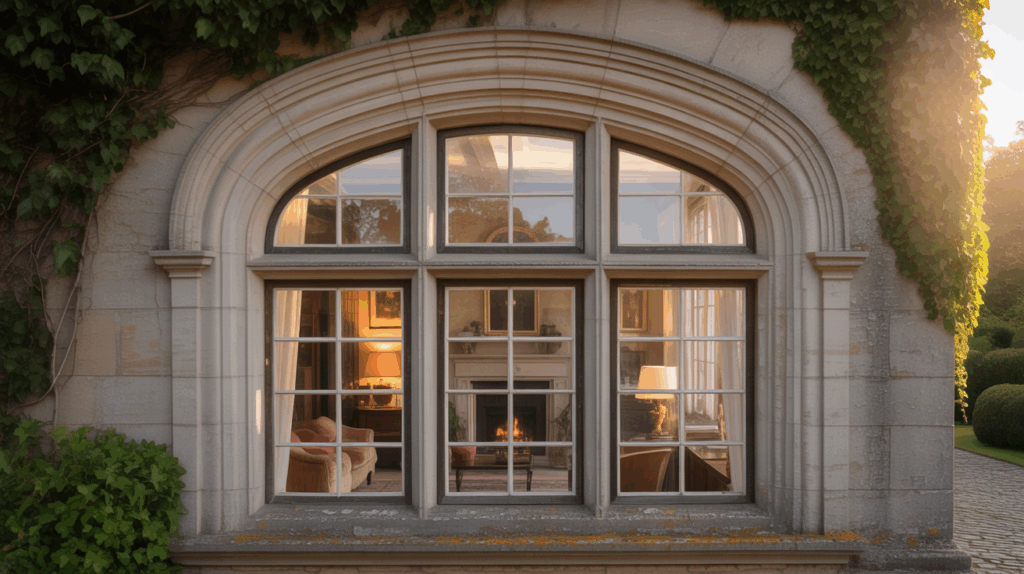
These windows have a rounded or semi-circular top that adds softness and elegance to a home’s look.
Often used as accent pieces, they create visual interest.
While beautiful, they’re usually fixed and cost more than rectangular windows.
Pros: Adds timeless architectural charm
Cons: Often fixed and more expensive
14. Jalousie Windows

Made of glass slats set into a metal frame, jalousie windows open by tilting the slats outward.
They’re common in tropical climates and offer constant airflow.
However, they are less secure and energy-efficient than other styles.
Pros: Good ventilation even in the rain
Cons: Poor insulation and security
15. Fixed Windows
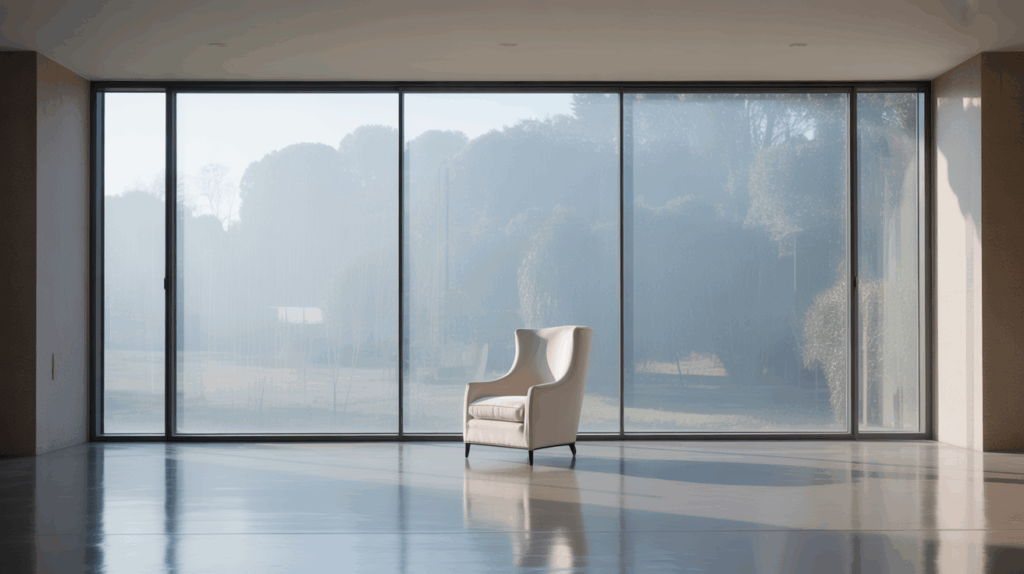
Fixed windows are non-operable and used solely for light and views. They’re found in high ceilings or modern designs where ventilation isn’t a priority.
They’re very energy-efficient but don’t open at all.
Pros: Energy-efficient and low maintenance
Cons: Provides no airflow
16. Tilt and Turn Windows
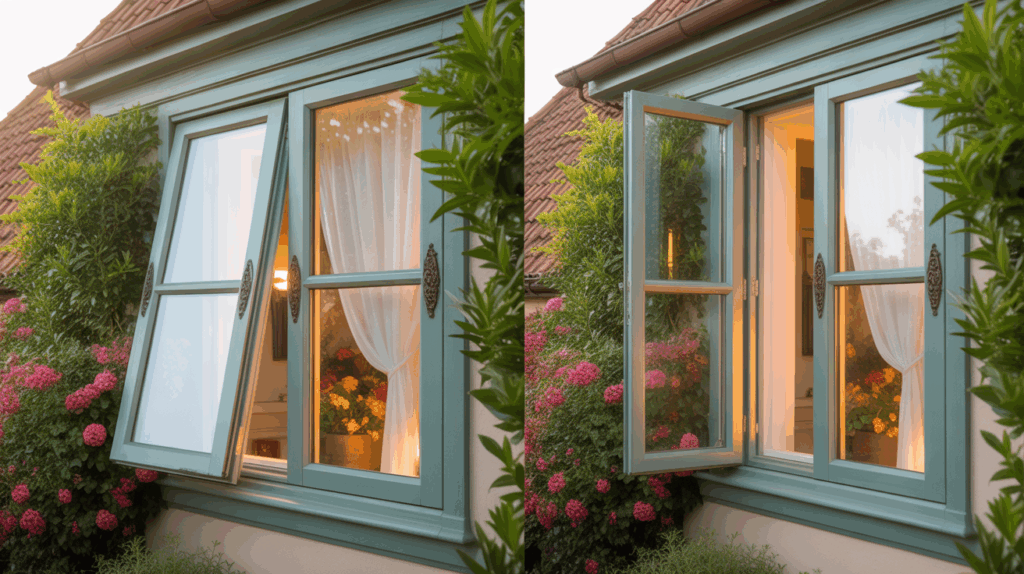
These European-style windows tilt inward from the top or swing open from the side.
The dual functionality makes them versatile and safe.
They’re especially popular in modern builds but are less common in the U.S. market.
Pros: Dual function and easy to clean
Cons: More expensive and less common in U.S. homes
17. Storm Windows

Installed over existing windows, storm windows add insulation and weather protection.
They’re a cost-effective upgrade for older homes.
While helpful, they’re not permanent solutions and can look bulky.
Pros: Increases energy efficiency affordably
Cons: Temporary solution; adds bulk
18. Egress Windows
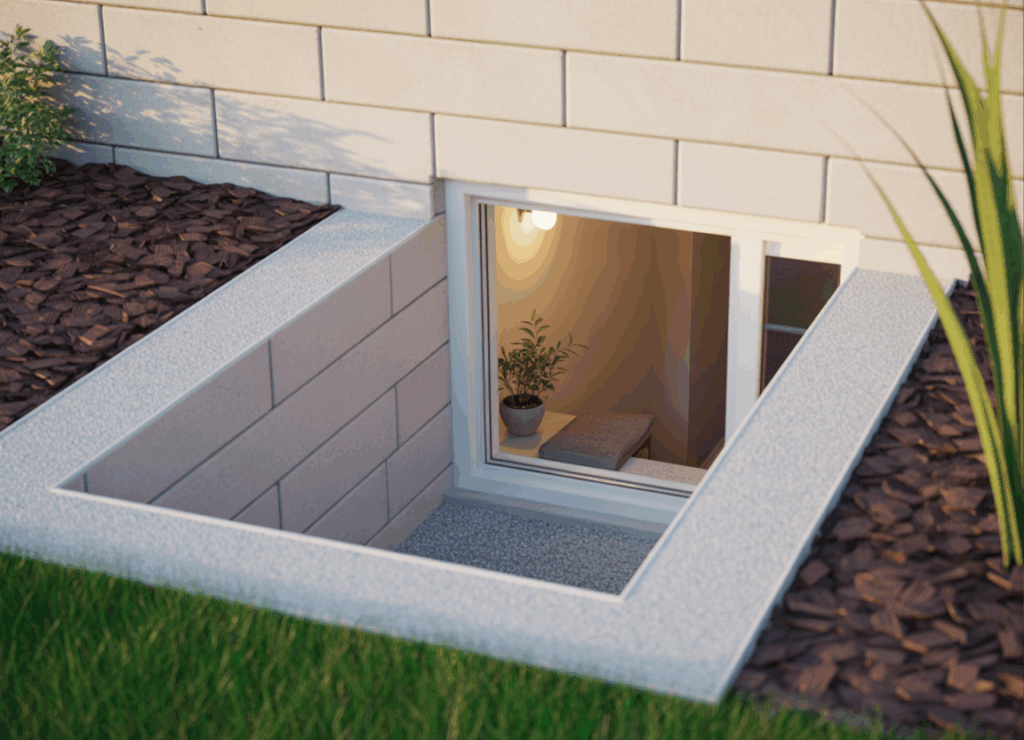
These are large enough to provide an emergency exit, often required in finished basements.
They also bring in more light and make rooms feel safer. Installation involves digging a well and adding a ladder or steps.
Pros: Adds safety and natural light
Cons: Requires significant space and proper installation
19. Glass Block Windows
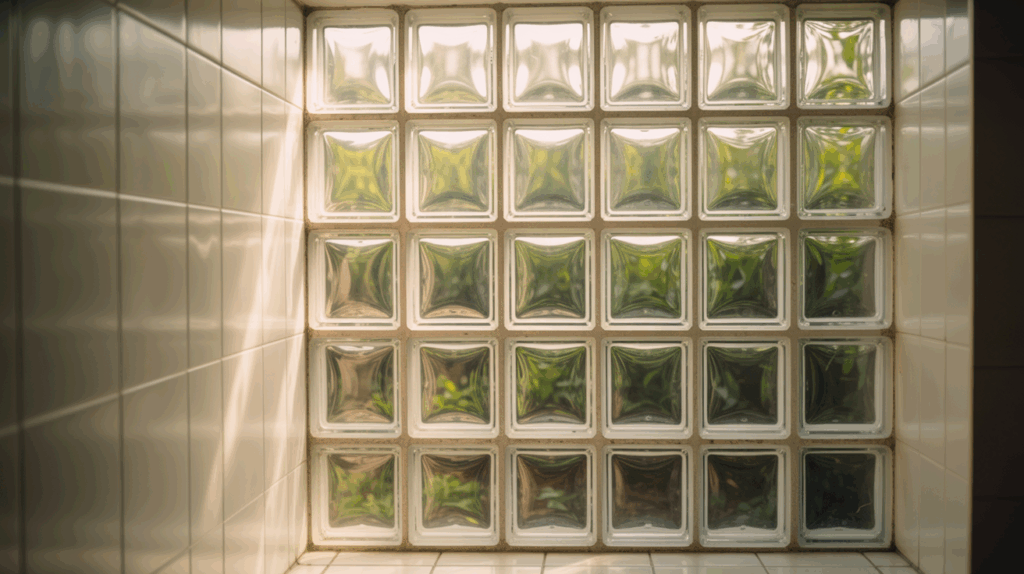
Constructed from thick glass bricks, these windows offer privacy while still allowing light through.
They’re popular in bathrooms and basements.
However, they are usually fixed and don’t allow airflow.
Pros: Durable and blocks outside view
Cons: No ventilation or open function
20. Custom-Shaped Windows
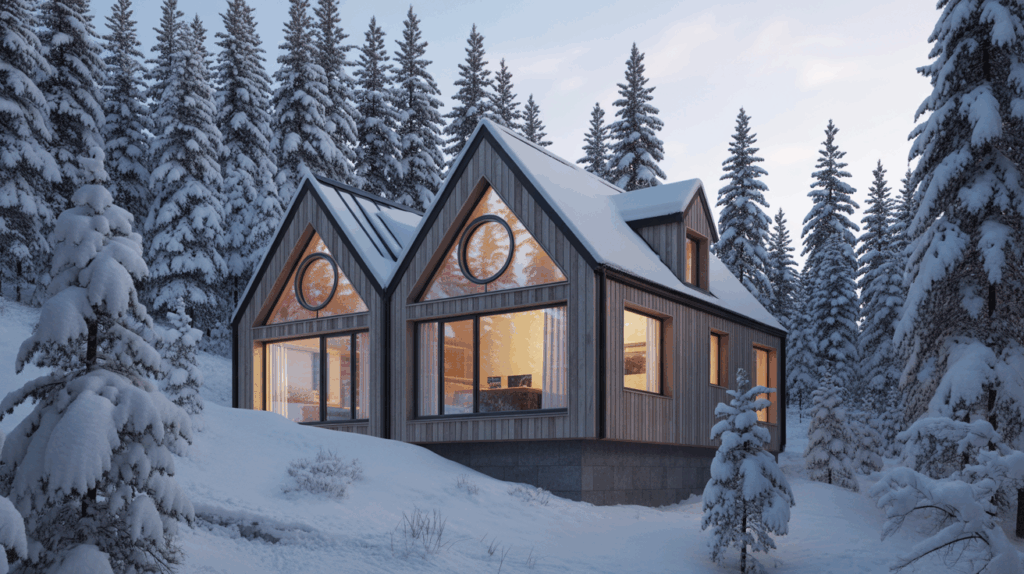
Custom windows come in unique shapes like triangles, octagons, or stars.
They’re designed to fit special architectural features and make a bold statement.
These are mostly fixed and can be expensive to manufacture.
Pros: Adds a unique character to architecture
Cons: Usually non-opening and costly
21.Round Windows
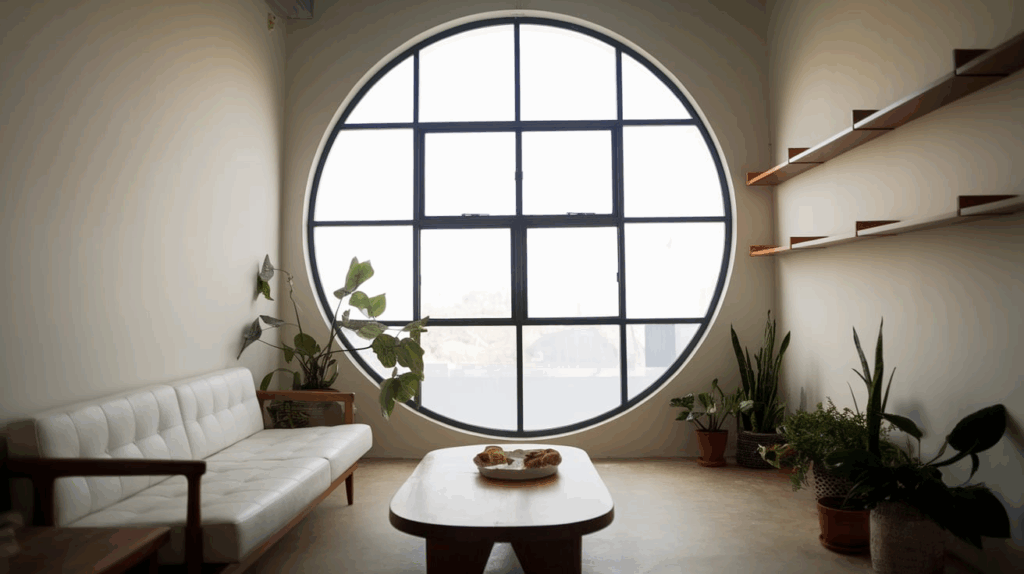
Circular windows bring a playful or nautical touch to your home.
They’re often placed in stairwells, entryways, or bathrooms.
While highly decorative, they typically don’t open and offer a limited view.
Pros: Decorative and compact
Cons: Limited view and usually fixed
How to Match the Right Window Type to Your Home
The perfect window type depends on your home’s layout, needs, and style.
- Best Windows for Modern Homes: Large picture windows, sliding glass, and casement designs match sleek, modern aesthetics and open floor plans.
- Best Windows for Traditional or Colonial Homes: Double-hung, bay, and arched windows fit well with symmetry and historical architecture.
- Best Windows for Energy Efficiency: Casement and fixed windows with double or triple-pane glass and low-E coatings offer strong insulation.
- Best Windows for Small Rooms: Awning, hopper, and sliding windows work well in bathrooms, basements, and other compact spaces.
Conclusion
I’ve found that choosing the right windows can truly change how a home feels – brighter, more open, and more comfortable all year round.
The perfect window doesn’t just look good; it also helps with airflow, light, and even lowering energy costs. What I like most is that there’s no one-size-fits-all solution.
You can mix styles to match how each room is used. For example, I love having big picture windows in the living room but prefer something smaller and more private in the bathroom.
When picking windows, think about what matters most to you—whether it’s more sunlight, better ventilation, or a beautiful view.
It’s okay to blend function with style. With a little planning, you can create a home that not only looks great but also works better for everyday life. Don’t rush it – your windows should fit your lifestyle, not just the layout.





